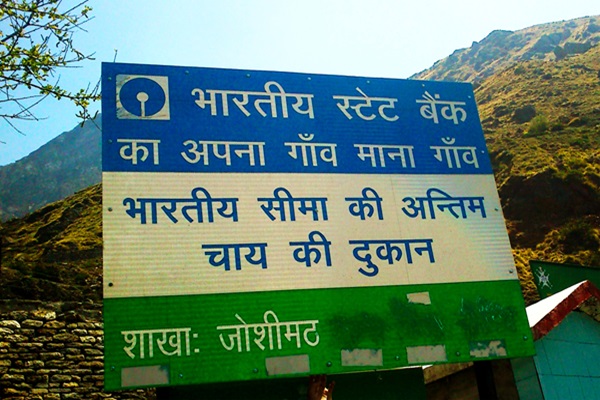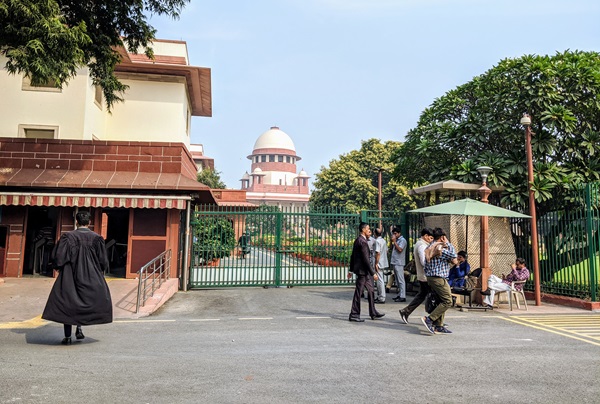.png)
What Role Should SDF Play In RBI’s Next Liquidity Framework?
As the RBI rethinks its operating framework, the SDF’s function—transitional fix or structural floor—demands sharper institutional clarity.


By Kalyan Ram
Kalyan Ram, a financial journalist, co-founded Cogencis and now leads BasisPoint Insight.
April 24, 2025 at 3:20 PM IST
The Reserve Bank of India’s April 2025 Bulletin includes a timely review of the Standing Deposit Facility, three years since its introduction. While presented as a technical appraisal, the article also addresses mounting concerns over liquidity management voiced at the highest levels of the central bank.
In February, Governor Sanjay Malhotra remarked that banks were increasingly avoiding the call money market, choosing instead to park funds passively with the RBI through the SDF. This trend, he suggested, was weakening the depth and signalling power of the overnight market.
The article offers a clarification, one seemingly informed by ongoing discussions with market participants. It attributes banks’ behaviour not to inertia, but to real operational frictions: liquidity asymmetry, the shrinking float from Just-in-Time government spending, and higher settlement risks under a 24x7 payments architecture. Banks are not holding back—they are adapting.
The article notes that the increasing share of SDF balances reflects a precautionary demand for liquidity by banks. With high-value payments now extending late into the day, the cost of falling short on reserves has increased. Unable to predict end-of-day outflows precisely, banks prefer to park their surplus funds as late in the day as possible rather than risk reserve violations or penal rates in case they are found wanting after lending in the call market. The SDF is open from 5:30PM to 11:59PM, while the call market closes at 5PM.
The move to Just-in-Time release of funds from treasuries to end-beneficiaries has further squeezed the float that banks once relied on, increasing the need for intraday liquidity insurance. This, in turn, has reduced appetite for longer-term variable rate reverse repo auctions.
The article highlights that banks have preferred overnight balances even in liquidity deficit conditions, suggesting an asymmetric distribution, where surplus and deficit coexist. When interbank trades don’t bridge this gap, banks fall back on the SDF for certainty and coverage.
The timely mid-course assessment notes that the SDF has absorbed nearly 65% of surplus liquidity since April 2022.
Liquidity Committee
The importance of the SDF revives a broader question. With an internal group reviewing the RBI’s liquidity framework, should the SDF’s role be re-examined, especially in light of the structure proposed by the Urjit Patel Committee in 2014?
That committee had recommended a corridor defined by collateralised tools—the reverse repo and Marginal Standing Facility rates as floor and ceiling—and an uncollateralised SDF as the ultimate floor.
Daily surplus liquidity was to be impounded via the reverse repo to anchor the weighted average call rate close to the repo rate.
A deeper question is also back on the table: What should be the operating target for monetary policy? Deputy Governor T. Rabi Sankar indicated earlier this month that this, too, is under review, given the low volumes in the call market and the systemic push for more collateralised overnight instruments.
The Urjit Patel Committee also wanted the RBI to graduate to a 14-day Term Repo Rate from the weighted average call rate as the policy anchor. The current liquidity instruments in play, it appears, were aimed at making the 14-day Term Repo popular so that it could eventually become the target rate. To facilitate this, the RBI phased out daily fixed rate repo and reverse repos and relied on variable rate operations of tenures ranging from one to 13 days. The objective was to “develop a spectrum of term repos of varying maturities with the 14-day term repo as the anchor”. This, the committee said, would support benchmark pricing and enhance policy transmission.
The real issue—besides the RBI’s failure to develop a term yield curve—is how the SDF’s role has mutated. Recommended in early 2014 by the Urjit Patel Committee, the legal amendment was enacted only in 2018, about two years after it was truly needed—the post demonetisation period. It finally became operational in April 2022, two years after the RBI flooded the banking system with record liquidity in response to the pandemic.
Then, the Monetary Policy Committee tightened its stance under the garb of “withdrawal of accommodation.” Since then, the SDF hasn’t played the role initially envisioned. The Patel committee described it as “a (low) remunerated” facility, with the RBI free to set the interest rate “without reference to the policy target rate”.
In reality, the current SDF rate of 5.75% is far from “low”, and it is officially linked to the repo rate. The SDF is the reverse repo, just uncollateralised. It is no surprise, then, that the result has been uneven amidst the continued reliance on the overnight. Confusion also reigns over how the RBI distinguishes between frictional and structural liquidity.
Earlier this month, the central bank signalled it wants to maintain a liquidity surplus of 1% of bank deposits, which is over ₹2 trillion.
As the RBI and its internal group revisit the framework, they must also acknowledge the limits of forecasting in a 24x7 payments environment. Banks aren’t creators of liquidity but intermediaries reacting to dynamic, often unpredictable, client flows.
While some banks may adjust more nimbly than others, none can perfectly time inflows, outflows, or government spending. Durable liquidity must be actively monitored and managed by the RBI, while frictional mismatches are best addressed through flexible money market operations.
Term or Overnight
Will the internal review lead to the RBI recommitting to the 14-day target rate or stick to the weighted average call rate? Or perhaps adopt a more representative money market rate, such as the proposed Secured Overnight Rupee Rate?
India’s external sector challenges—currency volatility, capital flows, and shifts in global interest rate cycles—demand immediate signalling tools. The weighted average call rate, by capturing real-time liquidity stress, has remained an effective operational target for monetary policy. This is the only instrument that trades exclusively in reserves. But it no longer fully reflects overnight funding costs.
Transitioning to a 14-day VRRR-based framework may offer theoretical elegance, but at the cost of precision and agility.
If the RBI ultimately decides to retain the overnight rate as its operative target—whether the WACR or SORR—then the SDF’s role must be clearly defined within the liquidity management framework.
The Urjit Patel Committee had envisioned such a scenario: a liquidity corridor with the SDF as the structural floor, replacing the fixed rate reverse repo, while using reverse repo auctions for fine-tuning.
One might argue that the SDF served its transitional purpose well as the RBI navigated the post-COVID liquidity overhang and its implications for inflation and transmission. It allowed the central bank to absorb excess funds without being constrained by collateral limits. But SDF’s future must be shaped by what the RBI decides the corridor should represent: a flexible, multi-instrument structure or a tighter, signalling framework anchored in overnight behaviour.
The SDF has stabilised liquidity behaviour in an increasingly complex system. As banks manage 24x7x365 demands, funds are auto-swept into the SDF, effectively making the RBI the borrower of first resort. That’s more than a decade after the RBI capped how much banks could borrow at the daily fixed rate repo window after the central bank realised it had become the lender of first resort.
But the RBI is meant to be lender of last resort—or borrower, when liquidity is in surplus. Banks should lend to each other, not deposit money with the RBI and earn a return of 5.75%.
As the framework evolves, the question is not whether to retain the SDF, but how to integrate it deliberately into a structure that supports clarity, discipline, and adaptability.






